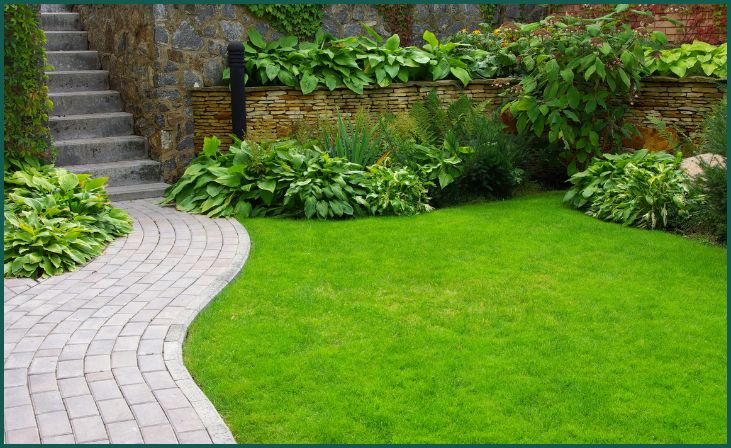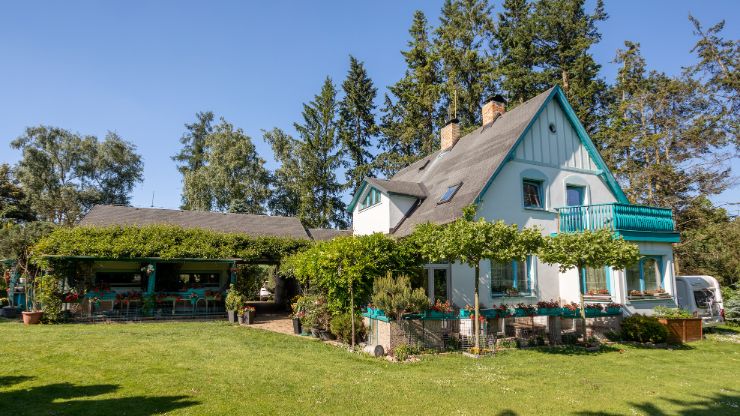Steps To Make Your First Garden In Your Yard – Are you dreaming of a lush garden in your yard but feeling overwhelmed by the idea? Starting a garden doesn’t have to be complicated or daunting. With the right approach, you can create a beautiful garden space that suits your style and needs. In this guide, we’ll walk you through ten easy s to help you get started on your gardening journey. From choosing the right location to selecting the perfect plants, we’ll cover everything you need to know to make your first garden a success. Whether you’re a gardening novice or just looking for some fresh ideas, these 10 Easy Or Simple Steps To Make Your First Garden In Your Yard will help you create a thriving garden that you can enjoy for years to come.
Table of Contents
Toggle10 Easy Or Simple Steps To Make Your First Garden In Your Yard
1: Choose the Right Location

Selecting the ideal location for your garden is crucial. Look for a spot that receives ample sunlight, typically 6-8 hours per day, and has well-draining soil. Avoid areas with heavy foot traffic or near trees that could compete for nutrients. Consider the convenience of access to water and how visible you want your garden to be from your home. If you’re unsure about the sunlight levels in your chosen spot, you can use a sun chart to track the sun’s path and determine the best location for your garden beds.
2: Prepare the Soil
Before planting, it’s essential to prepare the soil. Remove any weeds or debris and loosen the soil to a depth of about 12 inches. Incorporate organic matter, such as compost or aged manure, to improve soil structure and fertility. A soil test can help you determine if any additional amendments, like lime or fertilizer, are needed. Consider using raised beds if your soil is poor or compacted, as they can provide better drainage and easier access for planting and maintenance.
3: Choose the Right Plants
Select plants that are well-suited to your climate and soil type. Consider factors such as the mature size of the plant, its water and sunlight requirements, and any special care it may need. For beginners, it’s a good idea to start with easy-to-grow plants like tomatoes, peppers, and herbs. You can also choose plants that serve a dual purpose, such as attracting beneficial insects or wildlife to your garden.
4: Plan Your Layout

Sketch out a rough plan for your garden, taking into account the mature size of your plants and their spacing requirements. Consider companion planting, which involves planting certain species together to benefit each other, such as marigolds to deter pests or basil to improve the flavor of tomatoes. Think about how you want your garden to look throughout the growing season and plan accordingly for succession planting to ensure a continuous harvest.
Also Read: Front Yard Landscaping Ideas That Are Simple and Beautiful
5: Plant Your Garden
Follow the planting instructions for each plant, taking care not to plant them too deep or too shallow. After planting, give your plants plenty of water to aid with root establishment. Consider using mulch to help retain moisture and suppress weeds. If you’re planting seeds, be sure to follow the spacing and depth guidelines on the seed packet, and keep the soil consistently moist until the seeds germinate.
Don't just scroll, subscribe!
BuzzTrail's unique web-stories are the cure for boredom you've been waiting for.
6: Water Regularly
Consistent watering is essential for the health of your plants. To promote deep root growth, water sparingly but deeply. Use a soaker hose or drip irrigation system to deliver water directly to the root zone and reduce water waste. Consider installing a rain barrel to collect rainwater for use in your garden, which can help reduce your water bill and minimize runoff.
7: Mulch Your Garden

Mulching helps to conserve moisture, suppress weeds, and improve soil health. Use organic mulches like straw, wood chips, or leaves, and apply them to a depth of 2-4 inches around your plants, avoiding direct contact with the stems. Mulching also helps to moderate soil temperature, keeping the roots of your plants cooler in the summer and warmer in the winter.
8: Fertilize as Needed
Monitor your plants for signs of nutrient deficiencies and fertilize as needed. Use a balanced fertilizer or organic alternatives like compost or fish emulsion. Follow the instructions carefully to avoid over-fertilizing, which can harm your plants. Consider using a slow-release fertilizer to provide a steady supply of nutrients to your plants throughout the growing season.
9: Maintain Your Garden
Regular maintenance is key to a successful garden. Be vigilant about diseases and pests, and act quickly to stop damage. Deadhead flowers, prune overgrown plants, and remove any weeds that appear. Consider using organic pest control methods, such as hand-picking pests or using insecticidal soap, to minimize the use of chemical pesticides.
10: Enjoy Your Garden
Finally, take the time to sit back and enjoy the fruits of your labor. Gardening is a rewarding hobby that can bring beauty and tranquility to your yard. Share your garden with friends and family, and take pride in knowing that you’ve created a beautiful outdoor space to enjoy for years to come. Remember, gardening is a journey, and each season brings new challenges and rewards. Embrace the experience and enjoy the process of watching your garden grow and flourish.
Conclusion
Establishing your first garden can enhance the beauty and happiness of your outdoor environment. It’s a gratifying experience. These ten easy steps can help you design a landscape that expresses your style and individuality. Recall that gardening is an educational process, so feel free to explore and try new things. With patience and perseverance, you’ll soon be enjoying the fruits of your labor in your very own garden paradise. So roll up your sleeves, grab your gardening tools, and get ready to make your first garden a reality!
FAQs
How much time does it take to maintain a garden?
How much time does it take to maintain a garden?
Maintaining a garden can vary depending on its size and complexity. However, dedicating a few hours each week should be sufficient for most small to medium-sized gardens.
What are some easy-to-grow plants for beginners?
What are some easy-to-grow plants for beginners?
Beginners can start with plants like tomatoes, herbs, zucchini, and marigolds, which are relatively easy to grow and maintain.

